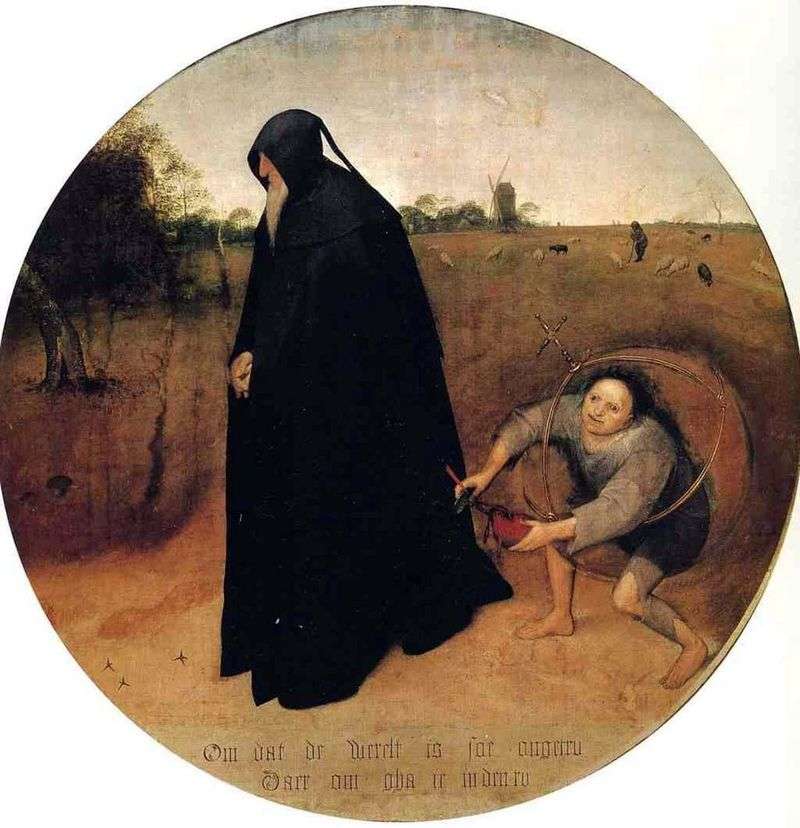
One of the artist’s last paintings, written a year before his death. In it, as in many of his other works, Bruegel reflects on human vices and the frailty of human life. The picture shows a young malicious dwarf, stealing a purse from a gloomy old man. The dwarf is inscribed in a sphere with a cross – this is a symbolic representation of a vicious world.
The monk-hermit in the low-hooded hood takes a dominant position. Hands are folded in a prayerful gesture, deliberately reciting the pious character of this character. However, piety turns out to be hypocritical: a tight purse of heart-shaped red purse appears from under the monastic attire. Perhaps here, Bruegel relies on the maxim “Where the purse, there is the heart,” which goes back to the Gospel text.
The phrase in Dutch, placed at the bottom of the picture, reads: “Since the world is so cunning, I go in mourning clothes.” The letters are engraved by an extraneous hand and possibly, at a later time, but it is believed that the meaning of this inscription coincides with what the artist wanted to show.
As if the misanthrope did not want to abandon the world, he can not do this. The insidiousness of the world is symbolized not only by a dwarf thief, but also by three garlic traps. which are decomposed along the path of misanthrope. The two-faced image of the monk hints at the fact that the painting contains a satire on the clergy. A gloomy misanthrope contrasts with a shepherd guarding the sheep in the background and full of care for his wards. According to the tradition that goes back to the Old Testament, the image of the shepherd allegorically portrayed Christ.
The round form of the picture is atypical for Brueghel. Judging by the works that have come down to us, he used it only twice. In 1558 during the preparatory work for the painting “Flemish proverbs” and in this work ten years later. Here he also returns to the abandoned technique – he writes not oil on wood, but tempera on canvas.
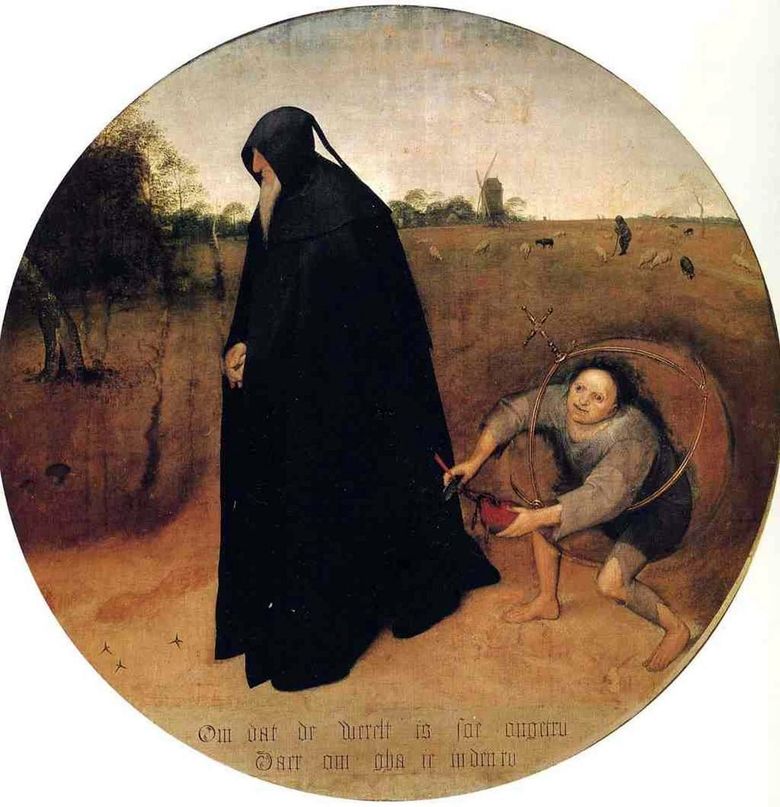 Misanthrope – Peter Brueghel
Misanthrope – Peter Brueghel On the way to Egypt by Peter Brueghel
On the way to Egypt by Peter Brueghel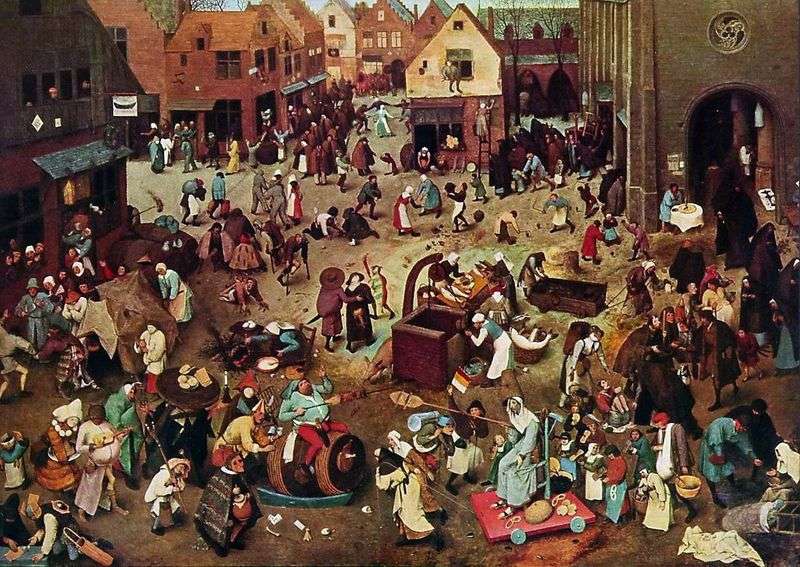 Carnival and Post by Peter Brueghel
Carnival and Post by Peter Brueghel Naval Battle in the Gulf of Naples by Peter Brueghel
Naval Battle in the Gulf of Naples by Peter Brueghel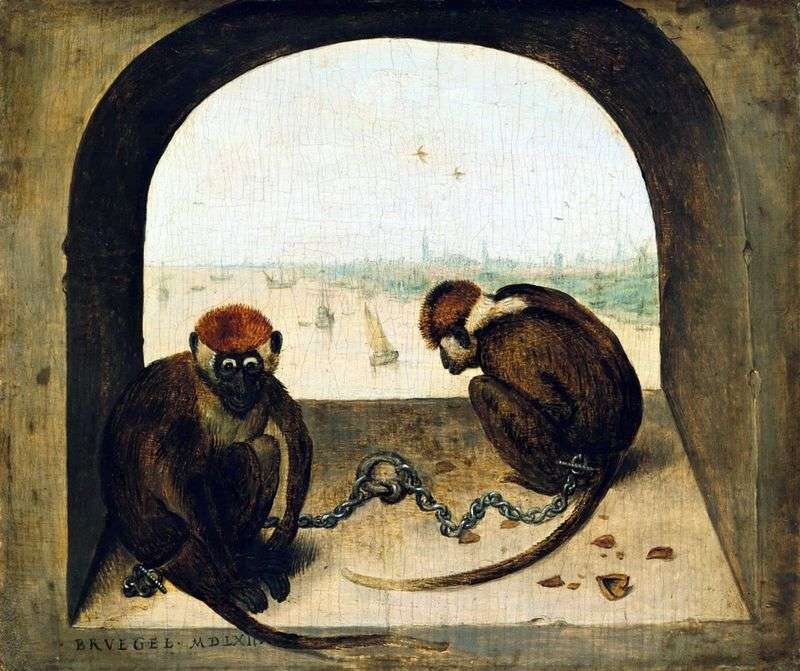 Two monkeys by Peter Brueghel
Two monkeys by Peter Brueghel Harvest Summer by Peter Brueghel
Harvest Summer by Peter Brueghel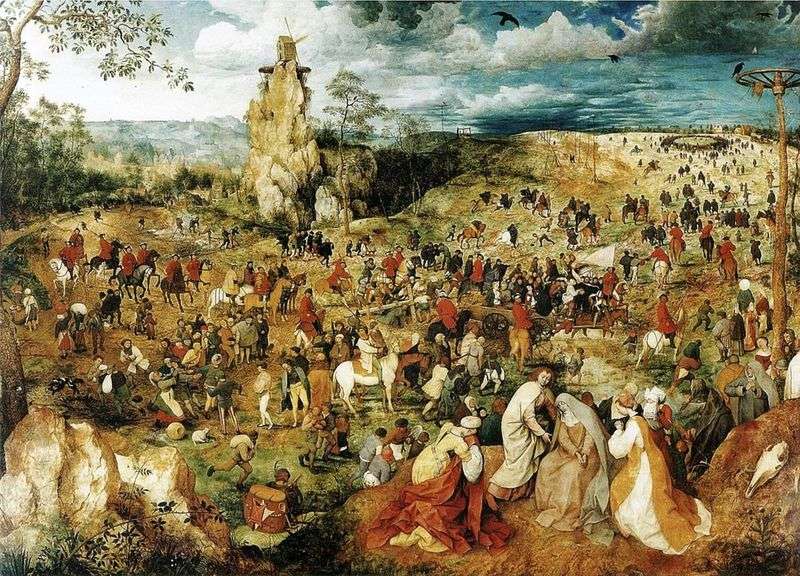 The Way to Calvary by Peter Brueghel
The Way to Calvary by Peter Brueghel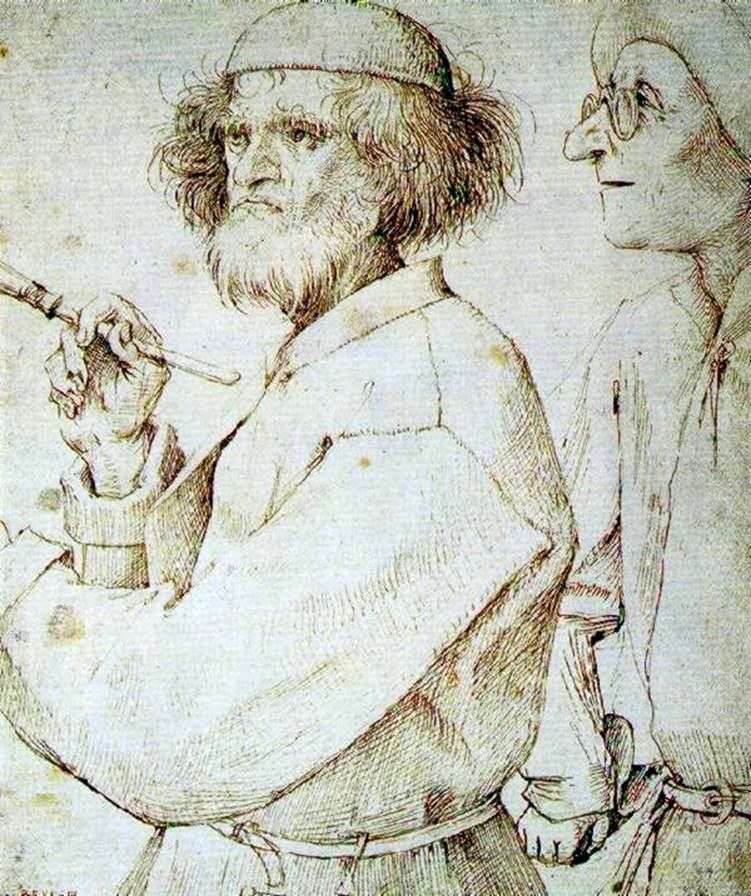 Painter and Buyer by Peter Brueghel
Painter and Buyer by Peter Brueghel